A new peer-reviewed study of fixed in-room Ultraviolet Air Cleaners shows a reduction of airborne and surface-borne bacterial contamination by as much as 88%.
GRAND RAPIDS, Mich., January 13, 2022 – UV Angel, a leader in pathogen control technology, today announced that a new study set to be published in the Journal of Occupational and Environmental Hygiene demonstrates a significant reduction in bacterial contamination by installing UV Angel fixed[TB1] in-room ultraviolet germicidal irradiation (UVGI) air cleaners in commercial buildings, including restaurants, schools, and office spaces. The total reduction of airborne pathogens after UV implementation averaged 73% with some test locations showing effectiveness as high as 88%. The air treatment systems also had a significantly improved effect on surface contamination with bacteria surface reductions averaging 55%.
The study examines fixed UVGI room air cleaners in high-occupancy rooms and the effect they have on both airborne and surface contamination in occupied environments. The results were dramatic. Rooms with fixed in-room UVGI air cleaners installed had significant reductions. The study determined that the use of this technology in commercial buildings will decontaminate the indoor environment and reduce hazardous exposure to human pathogens
The peer-reviewed study was authored by a consortium of top industry professionals that specialize in Public and Environmental Health and was led by Dr. Linda Lee, MBA, CIC. Dr. Lee, along with the study’s co-authors, who are internationally respected in their fields, having held or currently holding positions in top U.S. institutions, such as Stanford University, M.D. Anderson Cancer Center, The University of Texas School of Public Health, and the Centers for Disease Control and Prevention (CDC). The study utilized technology developed by UV Angel that was deployed in multiple commercial environments.
Paul Jensen, Ph.D., PE, CIH, a co-author and former Centers for Disease Control and Prevention (CDC) International & Domestic Lead, Airborne Infection Prevention & Control, and Laboratory Biosafety, noted that the results are particularly helpful in the fight to control disease-causing pathogens and provide safer indoor environments. “Having solid data that helps us evaluate in-room air treatment technology for safer indoor environments is a big benefit,” said Jensen. “Being able to utilize UVGI room air cleaners to treat contaminated air in occupied rooms, with the resulting reduction in surface contamination, was a very significant finding of the study,” Jensen continued.
The study found indoor environments to be like a snow globe; what goes up must come down and the very small particles generated by talking, coughing, breathing, and sneezing will disperse, circulate, and settle on room surfaces or become re-entrained by air currents in the breathing zone within the room. As highlighted in the study, commercial building ventilation systems (HVAC) were designed for comfort and not intended to disinfect the air.
Seamlessly installed into existing or new construction and designed directly into a traditional ceiling light fixture, UV Angel Clean AirTM is a quiet, unobtrusive environmental disinfection system that uses ultraviolet light to kill pathogens (viruses, bacteria, and fungi) in the air 24/7, 365 days a year. The UV Angel Clean AirTM products operate independent of the HVAC systems and pull room air into a sealed high-intensity UV-C light chamber, where the air is continuously treated, and then clean air is returned to the room. Independent studies have shown it safely kills pathogens in occupied spaces with up to 99.99% effectiveness. This approach continuously targets pathogens at the room level, where disease transmission begins as people are present and gathering.
UV Angel Clean AirTM also connects to UV Angel’s cloud-based digital platform, which allows for remote system administration and maintenance from anywhere with an internet connection. It allows administrators to view key performance indicators from a single unit, or an entire fleet. The UV Angel Cloud system also allows for one-click integration into all major building management system platforms, providing a single, comprehensive view of a facility’s health.
“Our healthcare centric foundation embodies our belief that providing the highest quality peer-reviewed scientific data is critical to building effective solutions to current and future problems. This study provides a robust data source on the effectiveness of automated, continual in-room air treatment,” said Tom Byrne, CEO of UV Angel. “Unlike periodic cleaning systems like UV-C towers or portable systems that are not designed to continuously work at the most critical time, when people are in the room, our suite of products work 24/7 without requiring additional staff to operate and this new study provides scientific data on how effective the system is for creating safer environments for employees, customers, patients, and families.”
Other organizations actively working on implementing UV-C technology to improve indoor environments will also benefit from this study. American Society of Refrigerating and Air Conditioning Engineers (ASHRAE), Environmental Protection Agency (EPA), Food and Drug Administration (FDA), and Centers for Disease Control and Prevention (CDC) are all actively working on projects that involve UV-C technology and setting guidelines and standards that help to ensure the optimal use of the technology.
The highly respected Journal of Occupational and Environmental Hygiene has released the published study in the January 2022 issue and copies are available now in open access, or in printed formats.



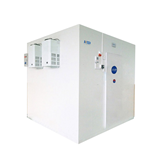


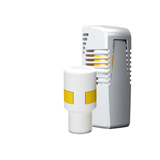
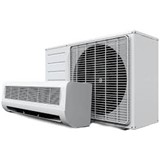

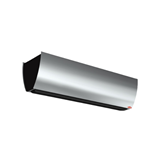
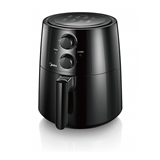
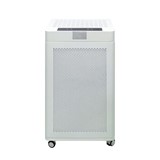














-205x205.jpg)





